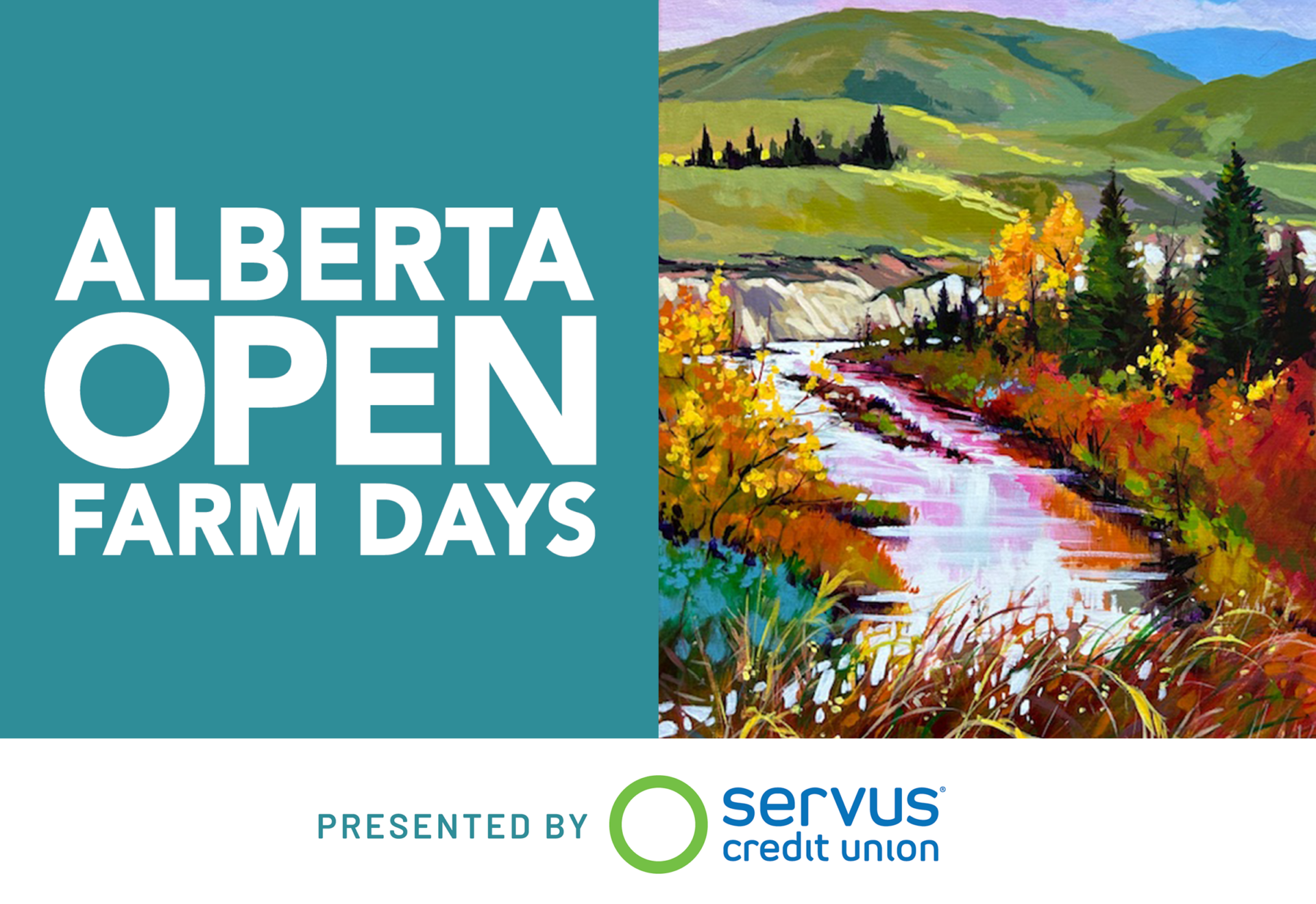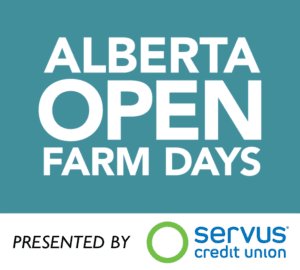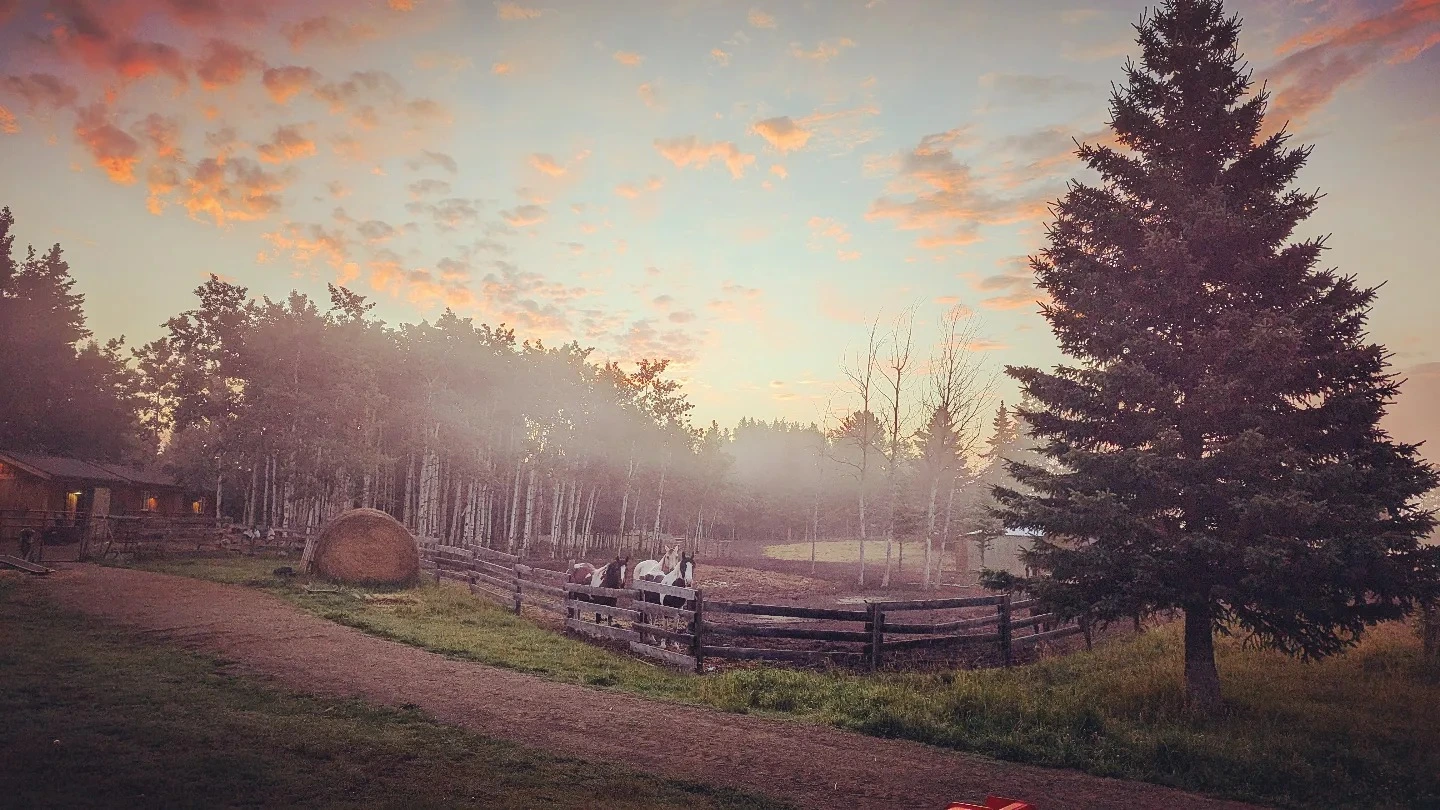
Every Drop Matters: How Providence Lane Homestead Protects Their Wetlands
When you look at a map of Canada, it’s hard not to notice the abundance of water. Lakes, rivers, wetlands — big blue blobs everywhere. It gives the illusion of abundance. But for farmers like those at Providence Lane Homestead, nestled high in the foothills of Alberta, water isn’t something they take for granted. It’s something they work hard to protect — every single drop.

A Ridge Between Rivers
Providence Lane Homestead sits at a striking 4,400 feet above sea level, perched along a ridge that divides two of Alberta’s major watersheds: the Red Deer River and the Bow River. This elevated spine of land causes weather systems to split — sometimes bringing hail to one valley, rain to another, and leaving the homestead dry in between.
While their position protects them from some of the harsher prairie storms, it also means they receive far less rain than neighbouring communities like Cochrane or Sundre. In a region where precipitation is sporadic and droughts are increasingly common, Providence Lane Homestead has adapted their entire farming philosophy to capture, conserve, and respect the water they do get.
Water Wisdom from the Land
“In Permaculture, we’re taught to value the marginal — to prioritize edge,” says the farm’s steward. That philosophy extends directly to how they view and manage water on their land.
Water is most effective when it’s allowed to slow, spread, and sink — a mantra borrowed from regenerative agriculture. And the best place for it to do that? Underground.
One of the most powerful tools for achieving that is also one of the most misunderstood: wetlands.
From “Waste” to Vital Resource
Historically, wetlands were treated as wasted space. They were too soggy for machinery, a hazard for livestock, and often mischaracterized as breeding grounds for disease. Many farms in the past saw them as obstacles — filling them in, draining them, or spraying them into submission.
But today, a shift is happening.
Farmers like those at Providence Lane Homestead are part of a growing movement that sees wetlands not as marginal, but as essential. “They’re a barometer of the land’s health,” the farm notes — offering biodiversity, soil fertility, carbon storage, and climate resilience, all in one dynamic ecosystem.
Working With Nature, Not Against It
Providence Lane Homestead doesn’t see water management as an isolated task — it’s part of a larger philosophy rooted in reciprocity with the land. That’s why they’ve partnered with Cows and Fish: Alberta Riparian Habitat Management Society, a group dedicated to promoting healthy riparian areas across the province. Together, they’re turning theory into action — and results.
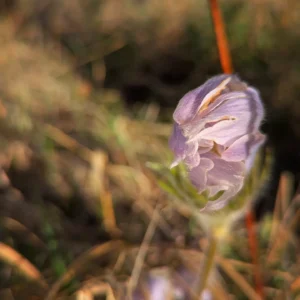
One of their primary goals has been to protect sensitive wetland zones from overuse by livestock. This means carefully fencing out grazing animals from key riparian areas, not just to prevent compaction and erosion, but to allow the native ecosystem to recover. Over time, grasses, sedges, and willows return, restoring natural water flow, reducing sediment runoff, and helping to rebuild the soil’s ability to retain moisture.
It’s a partnership between people, plants, animals, and the land itself.
The impact of this shift is visible everywhere on the farm. Soil that once dried out quickly now stays moist longer, even during hot summer stretches. The risk of wildfire — a growing concern at their elevation — has been reduced thanks to increased ground cover and healthier root systems. And the biodiversity? It’s booming. Swarms of pollinators hum through the meadows, songbirds flit between willows, and dragonflies patrol the ponds like living proof of ecological balance.
These wetland margins, often dismissed in the past as inconvenient or unproductive, are now recognized as powerhouses of life and resilience. At Providence Lane, the edge is not the end — it’s the engine.
Nature Knows Best
The more the team at Providence Lane Homestead has observed the land, the more they’ve come to trust in its natural intelligence. Their farm is blanketed with native grasses — like rough fescue, bluejoint, and native brome — that have evolved to handle the challenges of life on this high, dry ridge. With only six to eight inches of topsoil to work with, these grasses don’t just survive — they thrive.
How? It’s all in the roots.
Unlike many introduced pasture species, these native plants send their roots deep into the glacial gravel layers left behind thousands of years ago. These deep root systems aren’t just searching for water — they’re anchoring soil, improving its structure, and creating pathways for rain and snowmelt to percolate underground where it’s safe from evaporation.
It’s a quiet kind of brilliance — no irrigation lines, no pumps, no external inputs — just millions of years of adaptation working in harmony with the land.
But this natural balance is fragile. Across Alberta, native grasslands and the wetlands that border them are disappearing, replaced by more intensive agricultural practices or development. Providence Lane’s commitment to preserving their native species and water systems is about more than stewardship — it’s about standing against this erosion of ecological heritage.
By protecting these grasses and the landscapes they anchor, Providence Lane Homestead is playing a small but vital part in a much larger story — one of resistance, regeneration, and renewal.
Every Drop Counts
When you farm at the top of the world — or at least a ridge between two major watersheds — water doesn’t come easy. At Providence Lane Homestead, they’ve learned to treat it like the treasure it is.
Instead of reshaping the land to drain or control water, they’ve reshaped their mindset. Their goal is to keep water where it falls, encourage it to sink into the soil, and make every drop do as much good as possible before it moves on. It’s not the quick solution — but it’s the lasting one.
That’s why you won’t find irrigation pivots or drainage ditches slicing up the fields here. Instead, there’s a quiet design at work: shallow swales that slow runoff, wetlands that act like sponges, and pasture rotations that give the land time to rest and recover. It’s a system built on respect for water’s rhythms, rather than dominance over them.
“We use our wetlands to act as a buffer between us and the vagaries of an extreme climate,” they explain. “Wetlands are a moderating influence, a way to protect our livelihood.”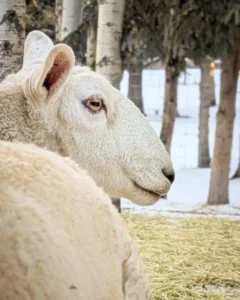
In a time when more and more farmers are looking for ways to adapt to a changing climate, Providence Lane’s approach offers a powerful example. It’s not flashy, and it’s not fast — but it’s working.
Because on this high Alberta ridge, water is rare, precious, and powerful. And at Providence Lane Homestead, they’re not just managing water — they’re building a future with it.
📸 Want a peek behind the scenes? Follow Providence Lane Homestead on Instagram and Facebook to see how they live their values every day — from protecting wetlands to raising animals and building community.
Mark Your Calendar for Open Farm Days 2025!
🧭 Visiting during Alberta Open Farm Days in August? Be sure to ask them about their work with riparian zones — and maybe even spot a wetland frog or two.
